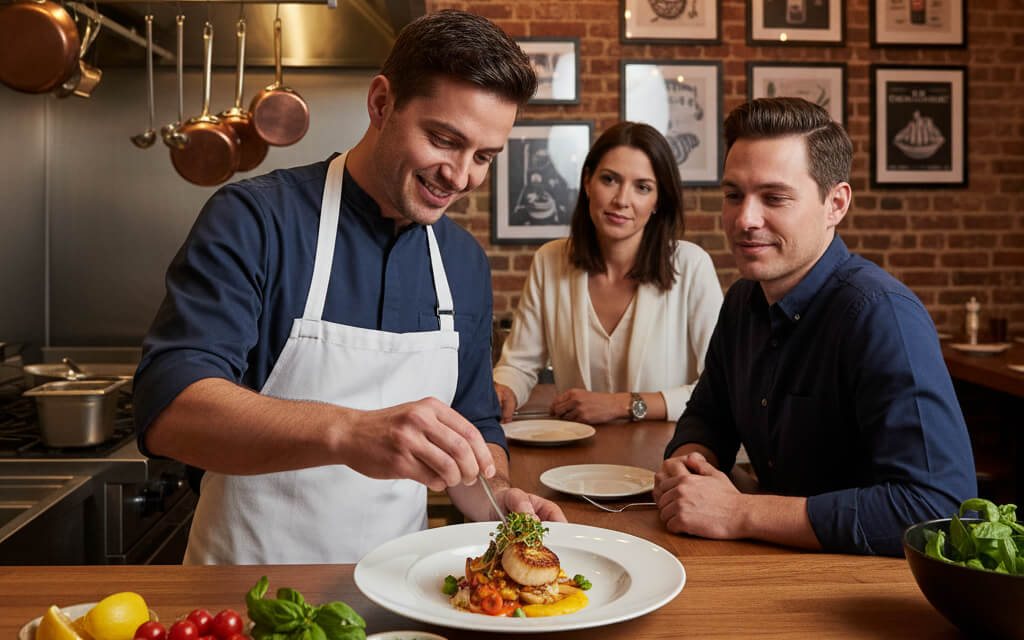The Rise of Chef-Owned Restaurants

In recent years, the culinary landscape has seen a significant shift toward chef-owned restaurants. Unlike large chains, these establishments are driven by the chef’s personal vision, creativity, and passion for quality. Diners are increasingly drawn to authentic experiences, where the chef’s personality shines through in every dish.
For restaurant owners, this trend offers both inspiration and a roadmap for differentiating themselves in a competitive market.
1. Why Chef-Owned Restaurants Are Gaining Popularity
Several factors contribute to the rise of chef-owned establishments:
- Authenticity and Storytelling: Diners crave a connection with the food and its creator. Chef-owned restaurants provide stories, expertise, and a personal touch that chains cannot replicate. This unique narrative is a powerful tool for building customer loyalty and engagement (Eater).
- Innovative Menus: With creative freedom, chefs can experiment with seasonal ingredients, fusion dishes, and unique presentations that attract both locals and tourists. The flexibility to change the menu frequently adds an element of surprise, keeping customers coming back.
- Local Sourcing and Sustainability: Many chef-driven establishments emphasize farm-to-table practices, appealing to environmentally conscious diners. By sourcing locally, chefs can create dishes that reflect the region’s culture and flavors, which is especially popular among diners seeking authentic experiences (Forbes Travel Guide).
2. Competing With Chains Through a Strong Digital Presence
Independent restaurants often face stiff competition from large chains. A compelling online presence can level the playing field:
- Website as a Hub: Showcasing the chef’s story, menu, and upcoming events can help build an authentic brand. An engaging website is key to conveying the restaurant’s personality and vision. For examples of effective restaurant websites, check out this guide for inspiration.
- Staff Promotion: Educating your team about your website and offerings ensures consistent messaging and customer engagement. Staff should be able to confidently promote your restaurant’s online presence, menu items, and any special events or promotions. For tips on staff training, see this guide.
- Online Ordering: Even small, independent restaurants can expand their reach and improve convenience by investing in digital ordering systems. Offering online ordering allows customers to easily place orders, increasing overall sales and streamlining the dining experience. Learn more about the importance of online ordering in this guide.
- SEO and Local Search: Competing with chains also requires strong local SEO. Focus on optimizing your website to appear in "near me" searches and highlight what makes your restaurant unique. Getting your website to rank well in local search results can significantly boost foot traffic. Discover strategies for competing with chains through SEO in this guide.
3. Building a Brand Around the Chef
A strong personal brand can turn a chef-owned restaurant into a destination:
- Storytelling: Share the chef’s journey, inspirations, and philosophy through social media, blogs, and newsletters. This creates an emotional connection with diners, who often feel more invested in a restaurant when they understand the chef’s story.
- Exclusive Experiences: Offering unique dining experiences, such as chef’s tables, cooking classes, and special tasting events, makes diners feel special and connected to the restaurant’s vision.
- Media and Reviews: Positive coverage in local publications, food blogs, and review platforms can amplify your restaurant’s credibility and visibility. Chef-owned restaurants benefit greatly from word-of-mouth and online reviews, which drive new customers. For tips on building a solid reputation, explore the Michelin Guide (Michelin Guide).
4. Benefits of the Chef-Owned Model
- Creative Freedom: Chefs have the ability to experiment and innovate without corporate constraints, allowing them to push the boundaries of culinary creativity. This freedom can result in exciting dishes that differentiate your restaurant from competitors.
- Stronger Customer Loyalty: Personalized experiences foster repeat visits. When diners feel a connection to the chef and the story behind the food, they’re more likely to return and spread the word.
- Community Engagement: Many chefs actively support local farmers and producers, enhancing community ties. Chef-owned restaurants often take pride in promoting local ingredients and contributing to the local economy, which resonates with socially-conscious customers.
This model positions your restaurant as more than just a place to eat; it becomes a cultural and culinary experience, rooted in the chef’s personal touch and commitment to quality.
Conclusion
Chef-owned restaurants are reshaping the dining landscape by emphasizing authenticity, creativity, and connection. Independent owners can leverage digital tools, educate their staff, and showcase the chef’s personal brand to compete effectively with larger chains. By embracing this model thoughtfully, restaurants can attract loyal patrons, drive growth, and stand out in a crowded market.
